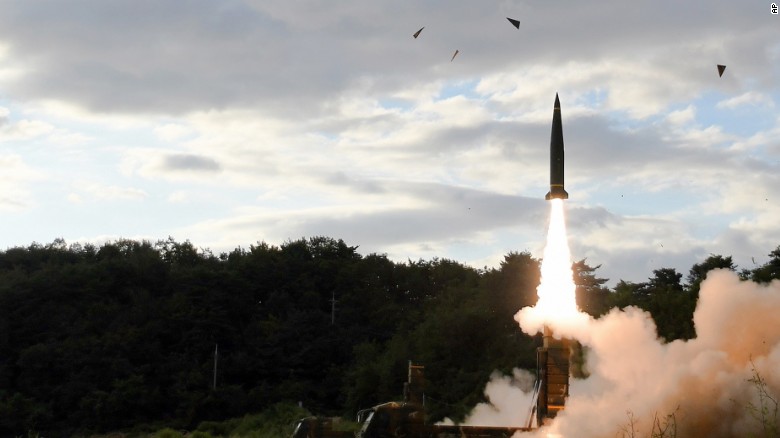Speaking after the launch, the first since
North Korea’s sixth nuclear test, Japanese Prime Minister Shinzo Abe said the launch was “totally unacceptable” and went against “the international community’s strong, united will for a peaceful solution.”
Friday’s missile test follows the release of a statement Wednesday, in which the North Korean state news agency KCNA threatened the “four islands of the (Japanese) archipelago should be sunken into the sea by the nuclear bomb of Juche,” referring to the ruling ideology of North Korea.
The launch also seemed to be intended to send a message to the US, flying a distance equivalent to that from North Korea to Guam, the US territory that has
come under threat from Pyongyang in recent weeks.
Furthest intermediate range missile test
North Korea’s latest missile was fired from the district of Sunan in the North Korean capital of Pyongyang, home to the country’s main airport, the South Korean military said.
Initial US assessments suggested North Korea fired an intermediate-range ballistic missile,
similar to that fired over Japan last month.
The missile flew about 3,700 kilometers (2,300 miles) and reached an altitude of 770 kilometers (480 miles) before landing in the Pacific Ocean. Guam is 3,380 kilometers (2,100 miles) from North Korea.
Friday’s missile flew the furthest of any North Korean intermediate-range missiles, though
previous launches have used lofted trajectories, where missiles fly much higher over a shorter distance. By comparison, an intercontinental ballistic missile
launched in July flew 3,700 kilometers (2,300 miles) high and traveled a distance of 1,000 kilometers (621 miles).
In response to North Korea’s launch, South Korea carried out a “live fire drill” that included a missile launch which the South Korean Joint Chiefs of Staff said was capable of striking the Sunan airport launch site near Pyongyang used for today’s launch.
The South Korean missile, which was launched from the country’s east coast while the North Korean missile was still in the air, was “a show of force in response to North Korea’s latest provocation,” a South Korean official told CNN.
A second missile that was fired at the same time failed and “sank into the sea off the east coast,” an official said.
Park Soo-hyun, spokesman for South Korean President Moon Jae-in, said the country’s military had been ordered “to prepare a stern measure that can effectively counter North Korea’s increasing nuclear and military threats.”
“North Korea’s firing of yet another ballistic missile is a clear violation of (UN Security Council) resolutions and a very serious and grave challenge to international peace and security,” the South Korean government said in a statement.
NATO Secretary General Jens Stoltenberg
said the launch was “another reckless breach of UN resolutions” and a “major threat” to international peace and security “which demands a global response.”
In regularly scheduled press conference Friday, Chinese Foreign Ministry spokeswoman Hua Chunying reemphasized Beijing’s “resolution” on pushing for the denuclearization of the Korean Peninsula.
“China has strictly and comprehensively implemented the resolutions of the UN Security Council,” Hua said, adding the country has “paid a great price and made sacrifices.”


